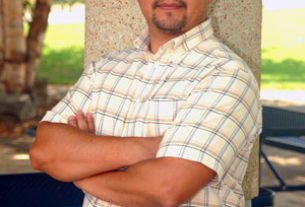Did You Know…?
Mayhem prevails in many Mexican cities during rush hours. The traffic in some big cities rarely seems to let up, or slow down, as vehicles jockey for the best position before becoming ensnarled in a tangled web of blocked intersections and jam-packed avenues.
Even thirty years ago, a standing joke (pun intended) in Mexico City was that the city’s largest parking lot was actually the ring-road or periférico. Built originally as a means of diverting traffic away from the downtown areas, the periférico (much of it 6 lanes wide in each direction) was swallowed up in the 1960s and ’70s as the city’s boundaries pushed inexorably further and further into the state of Mexico. The periférico no longer helped drivers escape the clutches of Mexico City’s traffic; it actively ensured that many would get trapped in it with no possible means of escape.
A casual observer of the traffic flows in most large Mexican cities could easily be forgiven for thinking that the entire experience is one best described as out-of-control anarchy.
But amazingly, some parts of the apparently chaotic daily movement of tens of thousands of vehicles between home and workplace are very carefully choreographed by traffic signs and police officials.
While most road signs, traffic signals and police gestures are self-evident, and unlikely to cause much confusion, there are some which newcomers need help to interpret correctly.
To help drivers out, police gestures are usually accompanied by penetrating whistles. These are delivered with wonderful over-statement by many traffic policemen, making them fully paid-up members of the Guild of Street Entertainers. It was several years before I discovered that their incessant whistles actually had very specific and well-defined meanings.
In Mexico City and the state of Mexico, a single short whistle means “Stop!”, while two short whistles means “Carry on!”. A single long whistle, however, means “Everyone stop!” Newcomers should be advised that the difference between one short and one long whistle may only become apparent when the vehicle immediately in front of them screeches to a complete, and totally unexpected, halt.
The system sounds simple enough, but, like so many facets of Mexico, it is not quite so simple as it first appears. Almost all traffic regulations are determined at either the municipal or the state, not federal, level. The fine print of traffic statutes therefore varies from one state to the next. The precise body positions used by the police when giving hand gestures (at least those used in directing traffic…), as well as the number, length and meaning of whistles, are all defined in the regulations.
Almost all states agree that one short whistle means “Stop!”, while two short whistles still means “Carry on!”. For other indications, though, the airwaves are somewhat more crowded.
For instance, in the states of Guanajuato and Nuevo León, three or more short whistles means “Speed up!” This is deceptively similar to the situation in Jalisco, where four short whistles means “Speed up!”. However, while in Jalisco, you’d better be aware that three “regular length” (i.e. neither long nor short) whistles are an indication for “All traffic to stop!” Newcomers who slam their brakes on when they hear three normal whistles in Guadalajara should beware of any Guanajuato or Nuevo León plated vehicle immediately behind them, whose driver may already be pressing his or her foot hard down to the accelerator…
Making matters even more complicated, while we have already seen that a single long whistle in Mexico City means “Everyone stop!”, in Jalisco, it officially means “Take care!” or “Proceed with caution!”
So, next time you’re caught in rush hour, or hopelessly lost while trying to navigate through an unfamiliar city, listen carefully, and at least avoid infringing, even accidentally, any of the many sound (pun intended) commands issued by traffic officials.
Drive safely, and remember, “Your children are waiting for you” and “Better late than never!”
Important disclaimer:
Your mileage may vary: the information contained in this article should not be construed in any way as legal advice. No responsibility is accepted for any use or abuse of the information contained herein.
This article is the basis for Chapter 28 in the author’s Mexican Kaleidoscope: myths, mysteries and mystique (Sombrero Books, 2016).
Traffic regulations (full Spanish-language text) on-line:
Text © Copyright 2006 by Tony Burton. All rights reserved.



